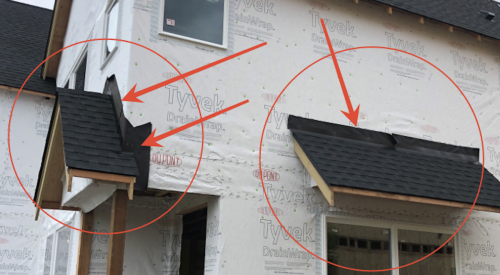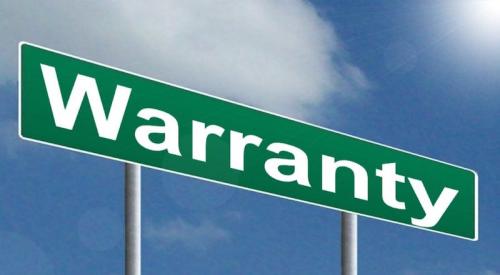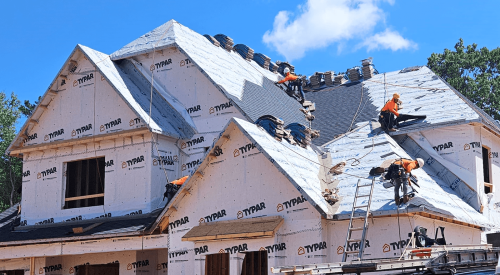GIANT home builders face unique challenges today: increased risk and liability; more complex home design; new materials and methods; changing building codes; diversity of specialty contractors; divisions spread across geographic regions; and high employee turnover, to name a few. The inevitable result? Knowledge inconsistency.
Consistently designing and building better performing homes makes sense. New homeowners remain satisfied when they live in homes that are affordable to operate, comfortable and problem-free. Better performing homes are less expensive for home builders to service and warranty in addition to being more likely to generate new referrals. But how does a builder start building high-performance homes, especially in light of today's construction challenges?
The answer is to use a process approach to ensure everyone in the organization understands and leverages the most current, tried-and-true, best practices in the industry. Best practices are those practices used in every aspect of home building — from design and construction to sales and service — that describe new and better ways to build a home.
By understanding and implementing best practices, builders can build high-performance homes that delight customers and protect their profits.
Don't Reinvent the Wheel
First things first: know what's working and what's not. "Most builders are already implementing some great practices," says Eric Newhouse, Builder Services Manager for IBACOS, where he leads consulting services in construction quality for home builders. "The first step is to determine your own best practices and find out where practices could be improved. When you do this evaluation, target improvements you want to make in the most critical areas that affect customer safety and satisfaction, as well as risk. That will help to proactively address areas that could potentially culminate in building performance issues — so, in essence, you'll be able to stop problems before they start."
This evaluation should include a review of all the construction documentation to ensure best practices are specified correctly. The evaluation should also include a field evaluation to ensure that best practices are implemented in the field. By doing a thorough evaluation of both documentation and field practices, you'll understand the issues your divisions are facing.
A field evaluation should include a yearly audit of current construction practices — on all product types. This evaluation should be considered your homes' annual physical — intended to diagnose major illnesses at early stages of development, so problems can be addressed before they grow into major liability issues.
In the field evaluation, check how well each of the best practices defined in the documentation are being implemented in the field. This will show where and when the issues are happening and pinpoint stages of the design and construction process that lack consistency in communication or implementation.
Benchmark Against Industry Best Practices
As part of the evaluation, it's critical to compare your own practices to industry best practices. The following represents a fraction of the best practices in the home building industry.
Priority Best Practice #1:Combustion safety
Combustion safety is a top priority for ensuring the health and safety of homeowners, and as such has been a key component of modern building codes. The basic concepts of combustion safety for home heating systems are simple:
- Provide appropriate amounts of air for the fuel to burn properly and effectively.
- Ensure that combustion by-products safely exit the living space, as these fumes are harmful to the occupants.
Building codes define the minimum acceptable level of performance. With combustion safety of heating systems, the best practices in the residential construction industry exceed the minimum requirements of building codes and provide improved safety, value, and performance for homeowners.
These best practices provide homeowners with the peace of mind that comes from knowing they have an extra measure of safety against exposure to harmful combustion exhaust, such as carbon monoxide. Given this significant benefit to homeowners, builders should implement the following best practices for combustion safety of heating systems in all of the homes that they build:
- Install a combustion-free heating system, such as an air-to-air heat pump or a geothermal heat pump system.
or
Install a sealed combustion, direct-vent heating appliance that uses outside air for the combustion process and expels combustion by-products to the outside, keeping the air in the home completely separate from the combustion process.
Flashing at Roof-to-Wall Intersections
The above-grade walls must drain rain down and away from the house without allowing any water to penetrate into the structural frame of the house. A critical location for water management at walls is flashing at roof-to-wall intersections. If water enters the structural frame of the building at this location, the long-term durability could be compromised by water leaks, mold growth, and decay of building materials. All types of exterior wall finishes (stucco, brick veneer, stone veneer and all siding materials) allow some amount of rain to penetrate through the cladding. The best practice is to install a second line of defense against water intrusion, typically called a drainage plane, to drain water down the wall surface behind exterior cladding. This drainage plane for the wall system must be properly integrated with flashing at roof-to-wall intersections.
Ensure Best Practices Through Education and Training
Educating team members is key in utilizing best practices. Every member of the organization should be familiar with best practices. This includes the design and engineering team creating the specs and drawings, the trades implementing the design in the field and even the sales and service teams who interface with customers. To ensure that everyone's on the same page, communicate the best practices through documentation, then follow up with consistent training.
Update all Documentation
Your best practices need to be integrated into the specifications, scopes of works, designs and architectural/construction drawings. Every team member that uses documentation should be able to clearly understand what your best practices are, and how to incorporate them in their work.
Train Teams on Best Practices
While updating documentation is essential, don't assume that it's the only education the team needs. Training is an essential part of getting everyone in the organization up to speed on what your best practices are, and how each of them should be implementing them in their daily work.
For example, a best practice for building durable, mold-resistant homes may be to flash the windows to ensure water doesn't leak into the home around the windows. While the field crew may be correctly flashing the windows based on the construction documentation, does the sales team understand this practice enough to answer any questions customers may have on ensuring durability? Sales, marketing and service teams should receive the same technical training as your construction team. This will allow for better communication between your internal teams, and between them and your customers and trade contractors.
Effective training programs combine different forms of training, such as classroom, field and online training, plus one-on-one mentoring. All training should be consistent across all divisions, while allowing for regional variations due to varying construction methods and codes. Training programs should be targeted at bringing new hires up to speed quickly, as well as keeping long-term employees on the same page.
Ensure Quality in the Field
After the annual field evaluation, the final step of the process is to ensure daily implementation of best practices in the field. If quality assurance isn't taken seriously during construction, all of the design and engineering effort that went before is worthless. Take the performance goal of comfort, for example. If the foundation, walls and roof of a home don't achieve the thermal performance goals that the heating and cooling system was designed to meet, homeowner comfort will suffer. Defects can arise from faulty insulation installation, inadequate air sealing, or the wrong window being delivered and installed.
To ensure that best practices are being implemented correctly on the job site, there should be a process for the site supervisors to review contractors' work to check that systems are all installed per the documentation. Because contracting out construction work is the nature of the industry, the site supervisor is the main line of defense against potential building performance problems. While every builder has (or should have) a quality checklist that the site super follows, there will always be gray areas that demand good judgment. It's critical for site supervisors to know what to look for so that they can catch a problem before it becomes a big deal — here again, education and training are a key part of assuring quality in the field.
With every builder promising quality, GIANTS need a way to differentiate themselves in the market. The best way to gain a competitive advantage is to implement a process that ensures the entire organization understands and implements best practices. This process should begin with evaluating current documentation and construction practices, and should culminate in team training that builds qualified personnel. It's not a quick fix for building performance issues, but in the long run, this process enables builders to build high performing homes that delight customers, reduce risk and uphold a good reputation.












